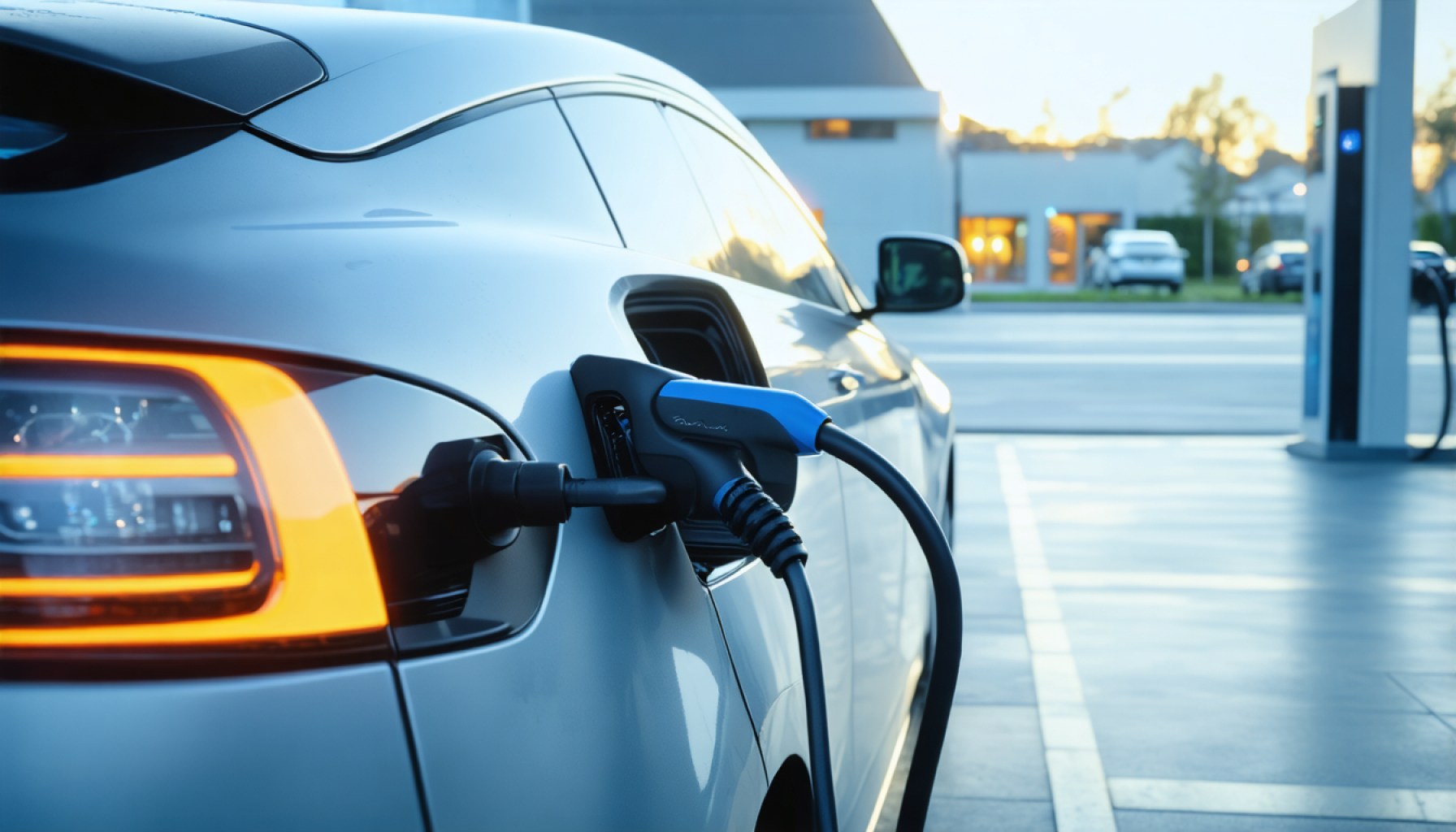- Electric vehicles (EVs) are rapidly transforming transportation, driven by advanced onboard battery chargers that convert AC to DC power.
- The EV onboard battery charger market is projected to grow from $4.4 billion in 2023 to $13.44 billion by 2030.
- Innovative bidirectional charging technologies are emerging, allowing EVs to both draw from and supply energy to the grid.
- Asia Pacific leads the market, driven by strong policies and infrastructure development, with China, India, and Japan at the forefront.
- European and North American markets drive growth through stringent emissions regulations and major investments in EV infrastructure.
- Vietnam and Thailand are charging ahead with investments and favorable policies to boost their EV sectors.
- Japan and South Korea are enhancing EV technology and production, with significant investments from companies like Nissan and LG Energy Solution.
- Singapore and the United States focus on expanding sophisticated EV charging networks to support sustainable initiatives.
- Onboard chargers are crucial in meeting EV demand and redefining energy landscapes for future sustainability.
Electric vehicles (EVs) are silently transforming the automotive landscape, driven by one incredible innovation—a new breed of onboard battery chargers poised to redefine the journey of sustainable transport. As demand accelerates faster than a sports car, the EV onboard battery charger market is racing forward, with market size predictions soaring from $4.4 billion in 2023 to a staggering $13.44 billion by 2030. This trajectory reveals more than a mere switch of gears; it marks a paradigm shift fueled by technology, policy, and market dynamics that are consistently electrifying our routes forward.
At the heart of the EV revolution, the onboard battery charger serves as its vital spark plug. This unsung hero in the EV ecosystem converts mundane alternating current (AC) found in households into the direct current (DC) lifeblood that powers these futuristic automobiles. And the pulse of innovation does not stop there; the rise of bidirectional charging technologies is turning vehicles into power conduits, not only drawing energy from the grid but also injecting it back—a concept transforming cars into mobile powerhouses capable of supporting homes, appliances, and even critical infrastructure.
Spotlighting a global playground, Asia Pacific emerges as a dominant force, accounting for over 40% of the market’s revenue. This rapidly motorizing region, fueled by robust governmental policies and the expansion of charging infrastructures, sets the pace with trailblazers like China, India, and Japan. Meanwhile, Europe and North America press the accelerator on growth, powered by stringent emissions regulations tightening the screws on traditional combustion engines and massive investments steering towards extensive EV infrastructure networks.
The global narrative on electric mobility finds intriguing chapters in countries that align sustainability with strategy. Vietnam is plunging headfirst into this electrification wave, with governmental momentum magnetizing both local and foreign investments to charge its EV infrastructure forward. Similarly, Thailand’s quest to become a manufacturing powerhouse for EVs leverages conducive policy frameworks to power up its production acumen, marking an exciting intersection of opportunity and innovation.
A northward glance highlights Japan’s refinement of automotive technology investments, showcased by Nissan’s strategic stake in ChargeScape to enhance EV charging experiences for its drivers across the vast tapestry of North America. Meanwhile, the South Korean horizon gleams as LG Energy Solution embarks on a multi-billion-dollar battery venture in Michigan, casting a spotlight on the symbiotic dance between manufacturing prowess and market expansion.
Across the Pacific, Singapore banks on its vision to wire itself as a smart nation, infusing investments into EV technologies and luring global players to establish charging solutions within its shores. In the United States, coalescing visions of modernity are unveiling sophisticated charging infrastructures in every nook and cranny, transforming the nation into a crucible of sustainability crafted with precision.
The profound takeaway from this electric euphoria is clear: as onboard chargers continue to evolve, they unravel the potential to not only meet the burgeoning demand of today but to dynamically shape the energy landscapes of tomorrow. They are more than enablers of the electric vehicle revolution—they are catalysts redefining how we power our lives, homes, and communities.
The Race to Electrify: How Onboard Chargers are Steering the Future of Mobility
Additional Facts and Insights on EV Onboard Chargers
The EV onboard battery charger market’s rapid expansion from $4.4 billion in 2023 to an estimated $13.44 billion by 2030 underscores significant technological advancements, policy shifts, and consumer demands. To offer a more comprehensive understanding, let’s delve deeper into industry trends, use cases, and challenges surrounding these transformers of sustainable transport.
How Onboard Battery Chargers Work
Onboard chargers are integral to an electric vehicle’s ability to efficiently convert AC from the power grid into the DC power needed to charge batteries. This process empowers vehicles with extended range and charging capabilities, both critical as consumer dependency on EVs grows.
Key Innovations in Onboard Chargers
1. Bidirectional Charging Technology
– Enabling vehicles to not only store energy from the grid but also return it. Such technology can turn EVs into auxiliary power sources, supporting home appliances or stabilizing grid demands during peak usage times.
2. Improved Energy Efficiency
– Modern onboard chargers are now designed to maximize energy efficiency, reducing loss during the conversion process to ensure more effective charging.
3. Faster Charging Speeds
– Advances in technology have led to faster charging times, addressing one of the main consumer barriers—charging convenience.
Real-World Use Cases and Market Trends
1. Home Energy Management
– Tools and applications are emerging to assist users in optimizing their home’s energy use by leveraging their vehicle’s onboard charger.
2. Grid Stabilization
– Cities and energy providers are exploring partnerships with EV manufacturers to harness onboard chargers for grid stability programs, particularly during peak demand.
3. Mobile Power Solutions
– The concept of EVs as mobile power banks is gaining traction, offering new business models in temporary power supply and emergency solutions.
Market Dynamics
– Asia Pacific’s Leading Role
The region’s rapid adoption and production capacity make it a vital player. Government incentives, particularly in China and India, are pushing the market forward.
– Regulatory Environment in Europe
The EU’s stringent emissions targets are driving the transition away from internal combustion engines, catalyzing onboard charger advancements.
– North America’s Infrastructure Boom
With significant investments in EV charging infrastructure, the United States is becoming a front-runner in accessible and robust EV networks.
Industry Challenges
1. Standardization Requirements
– The industry continues to grapple with the lack of standardized technology and protocols, complicating charger compatibility across different vehicle brands and models.
2. Resource and Cost Constraints
– The manufacturing of onboard chargers can be resource-intensive, with rare materials like lithium and cobalt posing cost and environmental challenges.
Actionable Recommendations
– For Consumers: Evaluate the compatibility of onboard chargers with home energy systems before purchasing an EV to ensure maximum utility.
– For Manufacturers: Collaborate towards universal standards in EV charging to streamline production and consumer adoption.
– For Policymakers: Encourage incentives that promote bidirectional charging capabilities to spur innovation and integrate EVs into national energy strategies.
Related Links
Learn more about advancements in electric vehicles and related technology at Tesla or explore industry insights and reports at Bloomberg.
—
As the EV journey progresses, the evolution of onboard chargers not only satisfies present demand but also forges the path to a dynamic energy future. Their potential to transform vehicles into power sources underscores their role as pivotal agents of change in both mobility and energy landscapes.







